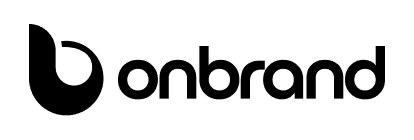ERP and PLM Explained: A Guide for Small Fashion Brands
ERP and PLM Explained: A Guide for Small Fashion Brands
Sep 25, 2024



Exploring the Differences Between ERP and PLM for Small Fashion Brands
In today's fast-paced fashion industry, small brands are often challenged to keep up with the demands for efficiency and innovation. To stay competitive, the right software systems can make a significant difference in streamlining operations and promoting growth. Enterprise Resource Planning (ERP) and Product Lifecycle Management (PLM) systems play critical roles in addressing these needs, yet serve different purposes.
Solving Problems with ERP and PLM
ERP systems are designed to manage and automate a company’s core operational processes. For small fashion brands, ERP can offer integrated management of day-to-day activities such as inventory management, accounting, human resources, and order processing. An ERP implementation ensures that data flows seamlessly across departments, reducing errors and improving operational efficiency.
In contrast, PLM focuses on managing the entire lifecycle of a product from inception, through design to manufacture. For fashion brands, PLM software like Onbrand is instrumental in accelerating product development timelines, enhancing collaboration among design and production teams, and ensuring compliance with regulations. PLM is particularly suited for complex product lines that require tight synchronization between multiple stakeholders.
Which Should Come First: ERP or PLM?
The decision of whether to implement ERP or PLM first can significantly impact a fashion and apparel brand's trajectory. In today's rapidly evolving technological landscape, prioritizing Product Lifecycle Management (PLM) is essential. Focusing on PLM from the outset significantly influences the design and development phases, which are critical in the fashion industry where trends shift swiftly.
With advanced PLM systems, brands can streamline their design processes, rapidly iterate on new ideas, and ensure products meet market demands swiftly. Modern PLM solutions offer powerful tools for collaboration, enhancing communication among designers, manufacturers, and other stakeholders, enabling faster and more efficient product launches. Moreover, implementing PLM first lays a solid foundation for data management and strategic alignment, smoothing the subsequent transition to ERP. Once product lines are optimized, and processes are solidified through a robust PLM system, the integration of an ERP system can further enhance operational efficiencies and scalability. By leading with PLM, small fashion brands are better equipped to innovate and adapt, establishing a strong competitive edge in the dynamic fashion industry.
When Should You Invest in PLM?
Investing in PLM software is not just a consideration for larger brands—it's mission-critical for ALL brands. At Onbrand, we see a compelling business case for adopting PLM at the earliest stages of growth. As soon as brands transition from manufacturer-driven design and development to bringing these capabilities in-house, it’s time to implement PLM. This proactive investment accelerates product development, boosts design and production efficiency, and lays a strong foundation for future growth. Don’t wait—make PLM a priority!
Conclusion
In today's competitive fashion industry, selecting the right software systems is crucial for success. While ERP solutions like SAP Business One, NetSuite, and Microsoft Dynamics are essential for comprehensive business management, incorporating a specialized PLM system such as Onbrand can significantly enhance product development. By understanding the differences and benefits of these systems, small fashion brands can make informed investments that streamline operations and promote growth in an ever-evolving market. Embracing innovation in software solutions is key to staying ahead in the fashion landscape.
Exploring the Differences Between ERP and PLM for Small Fashion Brands
In today's fast-paced fashion industry, small brands are often challenged to keep up with the demands for efficiency and innovation. To stay competitive, the right software systems can make a significant difference in streamlining operations and promoting growth. Enterprise Resource Planning (ERP) and Product Lifecycle Management (PLM) systems play critical roles in addressing these needs, yet serve different purposes.
Solving Problems with ERP and PLM
ERP systems are designed to manage and automate a company’s core operational processes. For small fashion brands, ERP can offer integrated management of day-to-day activities such as inventory management, accounting, human resources, and order processing. An ERP implementation ensures that data flows seamlessly across departments, reducing errors and improving operational efficiency.
In contrast, PLM focuses on managing the entire lifecycle of a product from inception, through design to manufacture. For fashion brands, PLM software like Onbrand is instrumental in accelerating product development timelines, enhancing collaboration among design and production teams, and ensuring compliance with regulations. PLM is particularly suited for complex product lines that require tight synchronization between multiple stakeholders.
Which Should Come First: ERP or PLM?
The decision of whether to implement ERP or PLM first can significantly impact a fashion and apparel brand's trajectory. In today's rapidly evolving technological landscape, prioritizing Product Lifecycle Management (PLM) is essential. Focusing on PLM from the outset significantly influences the design and development phases, which are critical in the fashion industry where trends shift swiftly.
With advanced PLM systems, brands can streamline their design processes, rapidly iterate on new ideas, and ensure products meet market demands swiftly. Modern PLM solutions offer powerful tools for collaboration, enhancing communication among designers, manufacturers, and other stakeholders, enabling faster and more efficient product launches. Moreover, implementing PLM first lays a solid foundation for data management and strategic alignment, smoothing the subsequent transition to ERP. Once product lines are optimized, and processes are solidified through a robust PLM system, the integration of an ERP system can further enhance operational efficiencies and scalability. By leading with PLM, small fashion brands are better equipped to innovate and adapt, establishing a strong competitive edge in the dynamic fashion industry.
When Should You Invest in PLM?
Investing in PLM software is not just a consideration for larger brands—it's mission-critical for ALL brands. At Onbrand, we see a compelling business case for adopting PLM at the earliest stages of growth. As soon as brands transition from manufacturer-driven design and development to bringing these capabilities in-house, it’s time to implement PLM. This proactive investment accelerates product development, boosts design and production efficiency, and lays a strong foundation for future growth. Don’t wait—make PLM a priority!
Conclusion
In today's competitive fashion industry, selecting the right software systems is crucial for success. While ERP solutions like SAP Business One, NetSuite, and Microsoft Dynamics are essential for comprehensive business management, incorporating a specialized PLM system such as Onbrand can significantly enhance product development. By understanding the differences and benefits of these systems, small fashion brands can make informed investments that streamline operations and promote growth in an ever-evolving market. Embracing innovation in software solutions is key to staying ahead in the fashion landscape.
Discover how Onbrand PLM can streamline your product development!
Discover how Onbrand PLM can streamline your product development!
© 2024 onbrandplm.com. All rights reserved.
© 2024 Onbrand. All rights reserved.

